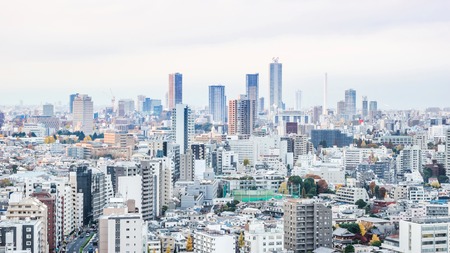Understanding Acne: Causes and Triggers
Acne is a common skin condition that affects millions of Americans, regardless of age or background. At its core, acne develops when hair follicles become clogged with oil (sebum) and dead skin cells, creating an environment where bacteria can thrive. While genetics play a significant role in determining who is more prone to breakouts, external factors—especially those prevalent in U.S. cities—also contribute heavily. Hormonal fluctuations, particularly during adolescence and young adulthood, are a primary biological trigger. However, for many living in urban environments across the United States, additional triggers come into play. These include exposure to high pollution levels, seasonal climate changes, and even lifestyle habits unique to American culture, such as fast food consumption and stress from a fast-paced work environment. Understanding these causes and triggers is essential for anyone seeking to manage or prevent acne breakouts, especially within the diverse climates and environments found throughout the U.S.
2. U.S. Climate Zones and Their Impact on Skin
Understanding how different American climate zones affect your skin is crucial for managing and preventing acne breakouts. The United States spans a vast territory with a variety of climates, each presenting unique challenges to skin health. From humid southern cities like Miami to dry desert environments like Phoenix, the climate you live in can either trigger or help control acne formation.
Major U.S. Climate Zones
Lets break down the most common American climate zones and their direct impacts on skin health:
| Climate Zone | Typical Cities | Main Features | Effects on Skin & Acne |
|---|---|---|---|
| Humid Subtropical | Houston, Atlanta, Miami | High humidity, warm temperatures year-round | Excess moisture leads to increased oil production and clogged pores; higher risk of bacterial growth causing breakouts |
| Desert/Dry | Phoenix, Las Vegas | Low humidity, extreme temperature shifts | Dehydration causes skin to overcompensate by producing more oil; dryness can lead to irritation and inflammatory acne |
| Coastal/Mediterranean | Los Angeles, San Diego | Mild temperatures, moderate humidity, ocean breezes | Salt and minerals from sea air can dry out skin or disrupt its barrier; mild climate helps some but triggers dryness in others |
| Continental/Seasonal | Chicago, New York City, Denver | Hot summers, cold winters, varying humidity | Frequent weather changes stress the skin barrier; winter dryness and summer sweat both contribute to breakouts at different times of year |
| Tropical/Island | Honolulu, Miami (partially) | Year-round warmth, very high humidity, lots of rainfall | Pores stay open due to heat and moisture; prone to persistent oiliness and fungal acne from sweaty conditions |
The Science Behind Climate Impact on Acne Formation
The link between your local climate and skin health isn’t just anecdotal—scientific studies have shown that humidity increases sebum (oil) production while extreme dryness triggers compensatory oil secretion. Both scenarios result in clogged pores and a higher likelihood of acne. Meanwhile, rapid temperature shifts or seasonal changes can weaken your skin’s natural barrier, making it more sensitive to irritants and pollutants.
Key Takeaway:
If youre struggling with persistent acne, consider how your city’s unique climate may be affecting your skin. Adapting your skincare routine according to local weather patterns is a powerful strategy for minimizing breakouts year-round.

3. Urban Pollution: The Hidden Aggravator
When we think about what causes acne, diet and hormones often come to mind first. However, for people living in U.S. cities, air pollution is a silent but powerful trigger for breakouts and skin irritation. Major urban pollutants—including smog, particulate matter (PM), and ground-level ozone—can directly impact your skin’s health.
Smog and Its Effects on Skin
Smog is a mixture of pollutants from vehicles, industry, and even household sources. In cities like Los Angeles or Houston, high smog levels are common, especially during the summer months. Smog contains chemicals that can clog pores and disrupt your skin’s natural barrier, making it more susceptible to acne-causing bacteria and inflammation.
Particulate Matter: Tiny Particles, Big Problems
Particulate matter (PM), especially PM2.5 and PM10, refers to microscopic particles suspended in the air. These particles are small enough to penetrate skin pores and trigger oxidative stress—a process that damages skin cells and accelerates inflammation. Over time, exposure can increase oil production and worsen existing acne, particularly for those who commute or spend significant time outdoors in busy metropolitan areas.
Ozone: Invisible Skin Irritant
Ground-level ozone forms when sunlight reacts with pollutants from cars and industrial sources. While ozone high in the atmosphere protects us from UV rays, ground-level ozone is a known irritant. It strips away essential lipids from the skin’s outer layer, leading to dryness, sensitivity, and increased risk of acne breakouts.
The Urban Skincare Challenge
Living in a city means facing a daily barrage of these pollutants. For Americans dealing with acne-prone skin, understanding this environmental connection is crucial. Addressing urban pollution as part of your skincare routine—such as cleansing thoroughly after outdoor activities or using antioxidant-rich products—can help reduce its impact on your complexion.
4. Real-World Case Studies: U.S. Cities with High Breakout Rates
Understanding how climate and pollution affect acne isn’t just theory—real-world data from major U.S. cities reveal tangible links between environmental factors and breakout prevalence. Let’s dive into research findings from Los Angeles, Houston, and New York to highlight how local conditions shape skin health.
Los Angeles: Smog and Sunshine
LA is notorious for its heavy traffic, high ozone levels, and year-round sunshine. According to studies by the American Academy of Dermatology, Angelenos experience elevated rates of acne due to a potent combination of air pollutants and UV exposure. The city’s warm, dry climate increases sebum production, while particulate matter clogs pores, creating a perfect storm for breakouts.
Key Environmental Factors in LA
| Factor | Impact on Acne |
|---|---|
| High Ozone Levels | Oxidizes skin oils, increasing pore blockages |
| Particulate Pollution (PM2.5) | Settles on skin, traps bacteria and dirt |
| Consistent Sun Exposure | Triggers excess oil production and inflammation |
Houston: Heat and Humidity Hazards
Houston’s subtropical climate means high humidity almost all year round. Research published in the Journal of Clinical and Aesthetic Dermatology correlates Houstons moisture-heavy environment with more persistent and severe acne cases compared to drier cities. Humidity keeps skin moist but also creates a breeding ground for bacteria and fungal acne types.
Key Environmental Factors in Houston
| Factor | Impact on Acne |
|---|---|
| High Humidity | Keeps pores open but increases bacterial growth |
| Heat Waves | Boosts sweat production, leading to clogged pores |
| Pollen & Allergens | Irritate sensitive skin, exacerbate breakouts |
New York City: Urban Stressors and Seasonal Shifts
The Big Apple faces unique challenges due to dense population, variable seasons, and elevated levels of nitrogen dioxide (NO2) from vehicle emissions. Data from Mount Sinai Hospital indicate that urban stressors such as air pollution spikes during summer months result in increased clinic visits for acne flare-ups. Winters bring dry air that strips skin barrier function, making it more susceptible to irritation-driven breakouts.
Key Environmental Factors in NYC
| Factor | Impact on Acne |
|---|---|
| Nitrogen Dioxide (NO2) Pollution | Promotes oxidative stress in skin cells |
| Dramatic Seasonal Changes | Affects skin hydration and oil balance throughout the year |
| Crowded Urban Living | Increases exposure to airborne contaminants and stress hormones like cortisol, both of which can worsen acne symptoms |
The Takeaway: Patterns Across Cities
The evidence is clear: whether you’re dealing with LA’s smog, Houston’s humidity, or NYC’s variable climate and pollution, these environmental triggers play a substantial role in shaping acne trends. Recognizing these patterns empowers residents—and their dermatologists—to tailor prevention strategies that address specific regional risks.
5. Living Local: American Lifestyle Factors and Acne
Urban life in the U.S. brings a unique set of lifestyle factors that can significantly impact skin health, especially when it comes to acne breakouts. While climate and pollution are direct contributors, daily habits shaped by city living often amplify the risk.
Diet: Fast Food, Sugar, and Dairy
Many Americans living in cities rely on convenience foods due to busy schedules. Diets high in refined sugars, dairy products, and processed foods—common in fast food culture—have been linked to increased sebum production and inflammation, both key triggers for acne. Research suggests that spikes in blood sugar from these foods can lead to hormonal changes that worsen breakouts.
Commuting: Exposure on the Go
Long commutes, whether by car or public transit, are a staple of urban American life. This daily exposure increases contact with air pollutants and particulates, which can settle onto the skin and clog pores. For those who drive with windows down or bike through traffic-heavy streets, the risk is even higher as pollution accumulates directly on facial skin.
Air Conditioning: Comfort with Consequences
Air conditioning is practically non-negotiable in many U.S. cities, especially during sweltering summers. However, spending hours in air-conditioned environments can dry out the skin, triggering the body to produce more oil to compensate—yet another pathway to clogged pores and acne flare-ups. Additionally, poor maintenance of AC filters can circulate dust and allergens indoors, further irritating sensitive skin.
Balancing Urban Habits with Skin Health
Understanding how these everyday choices interact with environmental factors gives city dwellers actionable insights. Opting for balanced meals over fast food, cleansing skin after commutes, and maintaining AC units can make a measurable difference in managing acne risk—even in the most challenging urban climates.
6. Action Steps: How to Protect Your Skin in U.S. Cities
Adopt a Smart Cleansing Routine
Urban air is filled with particulate matter, car exhaust, and industrial pollutants that settle on your skin daily. Use a gentle, sulfate-free cleanser twice a day to remove impurities without over-drying. Micellar water or oil-based cleansers work well for city dwellers because they effectively dissolve dirt and pollution particles. Look for products labeled “non-comedogenic” to avoid clogging pores.
Use Antioxidant-Rich Skincare
Antioxidants like Vitamin C, niacinamide, and green tea help counteract the oxidative stress caused by smog and UV exposure common in cities like Los Angeles or Houston. Incorporate serums with these ingredients into your morning routine under sunscreen. This not only helps prevent acne but also reduces long-term skin damage from environmental toxins.
Moisturize Wisely Based on Local Climate
If you live in humid regions like Miami, opt for lightweight, gel-based moisturizers that hydrate without leaving a greasy residue. In drier climates such as Denver, use richer creams with hyaluronic acid or ceramides to support your skin barrier and prevent dryness-induced breakouts. Always check labels for “oil-free” or “water-based” if you’re acne-prone.
Prioritize Sun Protection
UV rays intensify inflammation and can worsen acne marks. Apply a broad-spectrum sunscreen (SPF 30 or higher) every morning—even on cloudy days in cities like Seattle or San Francisco. Choose mineral sunscreens with zinc oxide or titanium dioxide; they’re less likely to trigger breakouts compared to some chemical filters.
Stay Mindful of Sweat and Heat
Heatwaves and increased sweating in cities like Phoenix can lead to clogged pores and irritation. After outdoor activities, wash your face promptly and avoid wearing sweaty hats or headbands for prolonged periods. Consider blotting papers throughout the day to manage excess oil without harsh rubbing.
Product Recommendations
For U.S.-specific options, consider Cetaphil Gentle Skin Cleanser (widely available at CVS/Walgreens), La Roche-Posay Anthelios Mineral Sunscreen SPF 50, Neutrogena Hydro Boost Gel-Cream for dry climates, or Paula’s Choice 10% Niacinamide Booster for antioxidant protection. Always patch-test new products, especially when adapting routines based on changing seasons or city relocations.
Your Daily Defense Strategy
Living in a U.S. city doesn’t mean you have to surrender your skin health to environmental stressors. By building a skincare routine tailored to both your local climate and pollution exposure—while choosing proven products—you’ll minimize acne flare-ups and keep your complexion resilient year-round.


